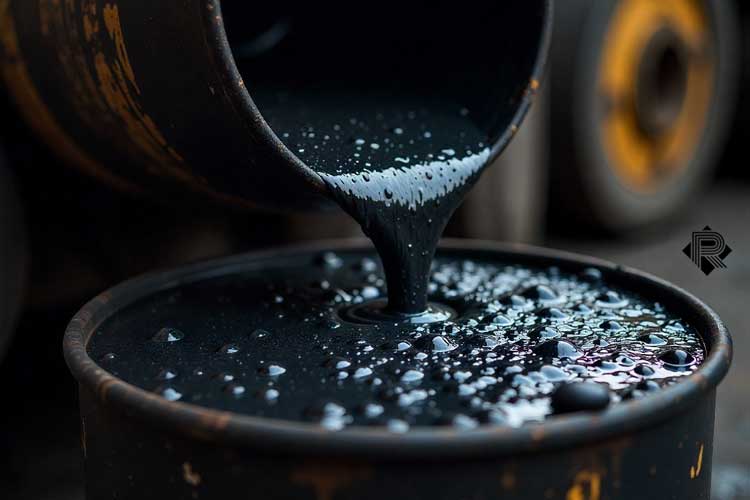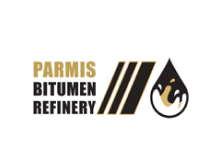Around the world, bitumen is essential for industrial, waterproofing, and infrastructure applications. Iran is a significant player in the world bitumen markets thanks to its sizable oil refining industry and advantageous geographic location. An extensive description of Iranian bitumen, including its types, production and export procedures, market dynamics, and important brands and grades, can be found below.
Why Is Iranian Bitumen Important and What Is It?
Bitumen is a dark, sticky, and viscous material that is mostly produced by distilling and processing crude oil. It is extensively utilized in industrial applications, waterproofing membranes, building insulation, and asphalt binder for road paving. The variety of grades produced, competitive pricing, and the strategic export routes—by land and sea—that provide access to markets in Asia, Africa, Europe, and beyond are what set Iran bitumen apart, in addition to the country’s raw material origin.
A comparatively steady and substantial bitumen output is made possible by Iran’s refining infrastructure, which includes sizable refineries close to Tehran, Bandar Abbas, and other areas. This capability, along with verified quality (test reports, certificates of origin, etc.), has increased the appeal of Iranian bitumen to foreign consumers.
Iran has established itself as one of the region’s top exporters by 2025 by taking advantage of its sizeable production as well as its strategic location near ports and regional trade routes.
Grades and Types of Bitumen Produced in Iran
To satisfy diverse climatic, traffic, and application needs, Iran produces bitumen in a range of types and grades. Selection, export, and quality control all depend on an understanding of these differences.
Penetration Grades vs. Viscosity Grades
There are two popular classification schemes in use:
Penetration (or “penetrative”) grades: These are based on how deep, in tenths of a millimeter, a standard needle can pierce bitumen under particular circumstances. For instance, 60/70, 85/100, etc.
Viscosity grades (VG): In this case, the bitumen is categorized according to its viscosity or consistency at specific temperatures. VG10, VG20, VG30, and VG40, for instance. When thermal resistance is crucial, these grades are frequently chosen because they are more stable under temperature changes.
Due to their resistance to softening at high temperatures, VG grades are more sought-after in many warmer or tropical markets. Penetration grades may provide improved flexibility and crack resistance in colder climates, such as temperate or cooler ones.

Common Iranian bitumen Grades and Their Applications
Iran produces and exports a number of grades, some of which are as follows:
Bitumen 85/100: A penetration-grade bitumen that is comparatively soft. When flexibility is required, it works well in colder or more temperate climates.
VG 40 Bitumen: This high-viscosity grade is perfect for roads that are subjected to high surface temperatures and heavy loads in hot climates.
Bitumen 60/70: This more moderate penetration grade is commonly used in normal road paving conditions, where neither extreme heat nor extreme cold predominates.
Oxidized (blown) bitumen: Bitumen that has been oxidized (blown) is frequently used for construction membranes, roofing, and waterproofing.
Cutback and emulsion bitumen: These types of bitumen are used for cold application or for repairing rural roads in specific environmental circumstances.
Depending on the climate at the destination and the requirements of the project, exports typically concentrate on penetration grades like 60/70 and 85/100 as well as VG grades like VG30 and VG40.
Iranian Bitumen Export Process & Logistics
Bitumen exporting from Iran entails a number of procedures, including logistics coordination, packaging choices, and regulatory inspections. A generalized export workflow is shown below:
The buyer’s requirements, the destination’s climate, etc. are taken into consideration when determining the grade.
Laboratory testing and quality certification: producers need to get accurate test results (ASTM, ISIRI, SGS, etc.).
terms such as volume, payment terms, FOB or CIF, etc.
The Iranian Ministry of Industry, Trade, and other regulatory agencies are involved in export permits and customs procedures.
Options for packaging include bitutainers (special insulated containers), jumbo bags, bulk, and drums. Each has advantages and disadvantages in terms of handling, risk, and cost.
Providing adequate insulation and heating, if necessary, as well as insurance and certificates for hazardous materials, if applicable, for transportation (land, rail, and sea).
ensuring that the buyer receives the appropriate shipping documents, quality certificates, and customs papers upon final delivery and document handover.
tracking and settlement after delivery.
Packaging Options
Bulk (f bulk) is the least expensive per ton, but handling hot bitumen requires facilities at the unloading side.
Steel drums are easier to handle and convenient for smaller volumes, but they are more expensive and heavier.
Jumbo bags are helpful for solid or oxidized bitumen in colder climates, but they have a drawback in that they are sensitive to temperature.
Bitutainers are more costly but better at maintaining integrity; they are insulated containers designed for hot bitumen shipments.
The decision is influenced by cost trade-offs, shipment size, temperature, and destination infrastructure.
Market Factors & Pricing of Iranian Bitumen
- Several variables influence Iran bitumen price in global markets:
- Crude oil prices and worldwide margins for refineries
- Foreign exchange rates (particularly changes in the USD/IRR)
- The expenses of transportation (fuel, shipping, insurance)
- Import limitations, trade sanctions, and geopolitical risk
- Certification, test results, and quality
- Global supply-demand equilibrium
Since crude oil is used to make bitumen, rising oil prices also increase the cost of processing and raw materials, which drives up bitumen prices. Additionally, if shipping routes are disrupted or insurance rates rise, the cost of transporting exported bitumen rises as well.
By reducing buyer risk through flexible packaging, reliable test documentation, and logistics optimization (using southern ports and overland routes), Iran’s exporters have been attempting to remain competitive in recent years.
Important Bitumen Manufacturers & Brands in Iran
Knowing the names and brands of some of the top producers is crucial when working with Iranian bitumen. You asked for two noteworthy ones:
- Jey Bitumen: Known for a range of penetration and VG bitumen grades, this manufacturer regularly supplies both domestic and foreign markets.
- Pasargad bitumen: Another Iranian brand that is available in the regional market is Pasargad bitumen, which is well-known for providing standard grades and serving road paving and infrastructure projects.
These companies use cost advantages, local expertise, and export reach to compete with other bitumen suppliers both domestically and abroad.
Choosing the Right Grade: Use Cases & Climate Matching
For long-term performance, the right bitumen grade must be chosen. The following general rules will help you match grade to application and environment:
Hot climates/heavy traffic: VG 40 Bitumen is a strong option, as its high viscosity resists softening and rutting under high temperature and load.
Busy roads and moderate climates: A penetration grade of 60/70 is frequently appropriate, striking a balance between stiffness and flexibility.
Colder climates: Bitumen 85/100 and other soft penetration grades provide superior crack resistance when temperatures drop.
Waterproofing/roofing/membranes: Oxidized (blown) and bitumen for insulation are more appropriate.
Rural or lower‑traffic roads: Emulsion or cutback bitumen may be used, tailored to local temperature and economy constraints.
Additionally, the certified properties (penetration value, softening point, ductility, etc.) must be matched by the bitumen that is actually delivered. Third-party certifications and quality assurance labs are helpful in this respect.
Challenges, Risks & Opportunities
| Category | Details |
| Challenges/Risks |
|
| Opportunities |
|
Conclusion
In the international market, Iranian bitumen is acknowledged as a strategic product. Iranian manufacturers have effectively used the quality and diversity of their products to compete, as evidenced by their large exports to Asia, Africa, and Europe. Understanding the grades, uses, and market dynamics of bitumen can help buyers and exporters make better decisions when purchasing or trading it. For the latest information, in-depth analyses, and more specialized guides, be sure to visit the Parmis Bitumen website.


